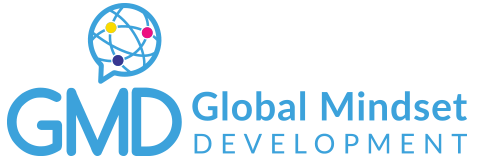Cultural intelligence for university administrators
The mobility and internationalisation of higher education is on the rise. Students travel for numerous purposes, including self-development and career advancement, exposure to various cultures, and the formation of professional networks. Some nationals are compelled to pursue their education at great distances in order to find higher-paying jobs and contribute financially to their families in their native countries.
It is common knowledge that the prevalence of nursing mobility issues is rising. Non-EU/EAA nationals can enrol at the University of Malta nursing bridging course to become EU-compliant and gain employment in the European Union. Studies indicate that it can be difficult for foreign nurses to adapt to a new environment, new people, and a new culture.
Administrators dealing with international students and colleagues may be overlooked by the University. As a liaison between the student and the academic, the administrator must be able to handle difficult or demanding situations.
Culture and Cultural Intelligence
Culture is a group’s beliefs, practises, and artefacts, whereas society is the social structures and organisation of the people who share those beliefs and practises. Society and culture cannot exist in isolation. Even if we feel the same way, we may express it differently.
Different members of a group may approach the same idea in slightly different ways. To recognise and appreciate the unique qualities of another person while maintaining your own identity, you must have a deeper understanding of that person. Professors Soon Ang and Christopher Earley pioneered the concept of Cultural Intelligence. Cultural intelligence (also spelled cultural quotient or CQ) is an individual’s ability to function effectively in a culturally diverse environment. Cultural Intelligence (CQ) helps an individual to function effectively in diverse international and domestic cultural contexts.
Individual’s Background
Unfortunately, racism based on an individual’s cultural background occurs on occasion. The Developmental Model of Intercultural Sensitivity (DMIS) by Milton Bennett depicts a progression beginning with denial, defence, commonality, minimization shifting to cultural awareness, culturally sensitive, relativity, adaptation, and integration.
Being cognitively empathetic in order to foster better intercultural connections should be a top priority, as we are all products of diverse cultural backgrounds. While it is simple to criticise foreigners for graduating and snatching jobs, it is necessary to determine whether the market is experiencing a labour shortage. Bennet’s Intercultural Developmental Model enables us to develop a greater capacity to comprehend and adapt as opposed to making quick judgments.
Keep always in mind the Cultural Iceberg when interacting with others. There may be many traditional facts about a culture, but if you dig a little deeper, you may also uncover less obvious information. We encounter daily obstacles in three environments: macro, meso, and micro. Cultural Intelligence should therefore be utilised to enhance reasoning and communication.
Cultural dimensions
Developing a more comprehensive grasp of Cultural Intelligence requires the use of tools and resources. To better understand the most significant differences and how these differences affect organisations, Fons Trompenaars and Hampden-Turner developed a cultural model that distinguishes seven cultural dimensions. The research led to the conclusion that differences between cultures are not the result of pure chance but may be anticipated. Each culture possesses its own unique set of values, beliefs, and preferences for a variety of things.
When interacting with members of a specific culture, one can put this helpful resource to good use. The model will allow you to gain a better understanding of people who come from a variety of cultural backgrounds. Allowing you to collaborate with them more effectively and reducing the likelihood of misunderstandings.
Hofstede’s model with six cultural dimensions is frequently used as a framework for cross-country cultural comparisons. And it has been described as one of the most influential in the field.
Using the tool, one will be able to compare cultural values orientations across countries. The research findings are useful for adjustment decision-making and task performance in culturally diverse settings.
Cultural awareness and unconscious biases
The CQ Model was created by David Livermore with the purpose of supporting individuals in gaining a more comprehensive awareness. In today’s globalised market, acculturation and cross-cultural knowledge are vital for success. Researchers currently believe that this type of consciousness and competence may be measured. One can now self-assess their Cultural Intelligence quotient (CQTM). CQ is divided into four skills; CQ Drive, CQ Knowledge, CQ Strategy and CQ Action.
It is essential to have the willingness to learn, a growth mindset, and an awareness of one’s biases. If you have a passion for your work, CQ Drive is a way to learn and adapt to multicultural situations. The greater an administrator’s cultural awareness, the more comfortable students feel in their environment. This could enhance students’ interpersonal skills, leading to greater study engagement and less hesitancy to initiate contact.
To comprehend foreign cultures and their histories, one must first acquire a deeper comprehension of several aspects of people’s daily lives, including business and legal systems, values and religious beliefs, attitudes, behaviour, and communication. Maintaining excellent intercultural communication and relationships would also facilitate the resolution of disagreements and conflicts in a variety of cultural contexts.
CQ Drive, Knowledge, Action and Strategy
Reading, conversing with others, and watching international television are all excellent ways to increase CQ Knowledge. Traveling, visiting local expat galleries, and listening to music from different cultures can all enhance your appreciation for other cultures. Monthly activities outside of the university can also be beneficial for students and university staff to integrate and socialise.
Planning involves utilising knowledge and experience to anticipate and address cultural differences. Aware interaction requires being consciously vigilant and mentally adaptable.
Gathering information will provide you with material for constructing your mental map. Meetings with academics and students, anonymous questionnaires, referencing past experience, and staying current with new regulations and announcements will all assist you in achieving your objectives. Worksheets and checklists with prompts are useful for guiding reflection during interactions with diverse others. It is also important to keep minutes which you can go back for reference.
Adapting appropriately and flexibly to multicultural situations is CQ Action. In addition to verbal and nonverbal flexibility, one must be able to adapt to cultural norms. When it comes to changing the tone and content of communications, this is especially important. Changing the way, you say things, such as your accent and tone of voice. Changing nonverbal cues like hand and facial gestures.
In addition to demonstrating concern, extending greetings to students who observe diverse holidays due to their religion will demonstrate thoughtfulness.
Mind, Body and Heart
Intrinsic to the Indian culture is the head nod, which people unfamiliar with it may find strange. The Indian head shake is a non-verbal, short-and-quick technique of communication. So it is essential to research how one can interpret diverse headshakes.
Mind, Body, and Heart are the three most crucial components of CQ, according to an article in Harvard Business Review. The mind is how well you know and understood it, and ready to find out new things. Your body language and actions and talk will allow others to realise that you are confident in what you are saying. Making mistakes and admitting them and moving on to improve on your skills shows that your heart is set in what you are communicating and ready to learn more.
One must also recognise that the world is comprised of millions of individuals. Each with their own thinking and in order to work together, everyone must be able to make minor adjustments to make the world more communicative and respectful.



